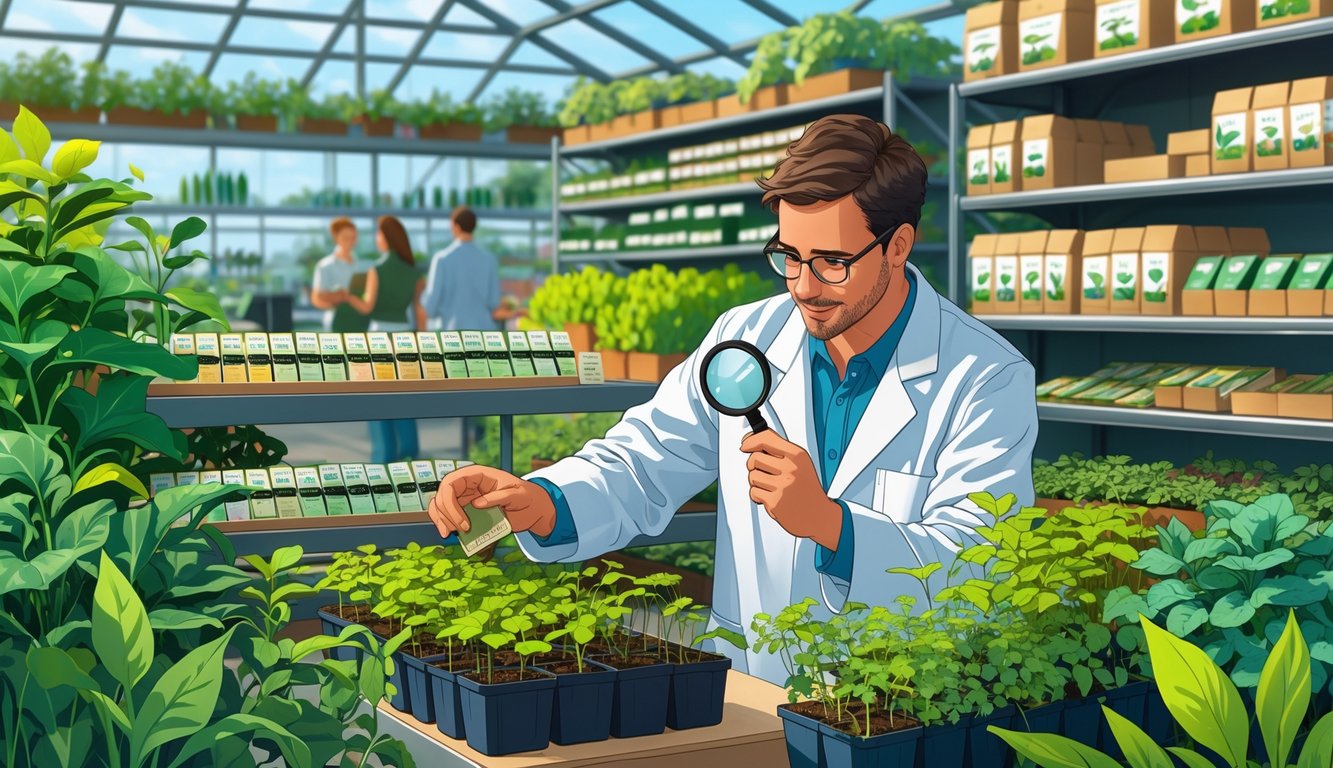
Collaborations Between Botanists and Retailers
People keep saying big retailers ignore real botanists, but my inbox says otherwise. Merchandising teams won’t stop emailing. Plant scientists don’t usually want their name on neon packets, but slap “botanist-approved” on something and people lose their minds. It’s all marketing.
Co-Branded Seed Collections
Seed racks used to be boring. Now I see my own notes on pollinator appeal and disease resistance plastered on co-branded collections at Sprouts Farmers Market. Half the in-store questions are about “curated by experts.” Seed brands stick my endorsement on everything—sweet peppers, wild arugula, you name it.
Some collabs are just marketing fluff (once saw my data quoted totally wrong), but sometimes botanists actually help write the growing notes and germination claims. What stands out isn’t the shiny packaging, it’s the wave of gardeners posting germination rates and tracking batch codes like they’re rare sneakers. If only marketing folks would read actual germplasm bulletins—most think “heirloom” just means old-timey font.
In-Store Expertise and Workshops
I wandered into a weekend seminar at a chain retailer and realized half the crowd wanted houseplant hacks. I just wanted to talk Fusarium resistance. Most staff only know the basics, but when they bring in botanists for hands-on classes and Q&As, people line up fast.
It’s not just for show. A store manager told me 30% of attendees came back for specialty seeds after a Friday workshop. I checked receipts. I’m that person. You can’t really cram genetics into a ten-minute demo, so I usually toss in something weird (“Yes, you can drown peas—ask any field tech about March root rot”) and hope someone pays attention. Leave a troubleshooting list and someone always asks if tomatoes cross with jalapeños. They don’t. That’s not how genetics works.
Quality Assurance Processes for Seed Picks
Everyone’s obsessed with spreadsheets and taste tests, but then someone emails about fake germination rates. I’ve watched quality control tank when a batch skips the process. Some retailers care more about packaging than the actual seeds. At least some botanists still drag seeds through endless tests before they hit the shelf.
Testing and Certification
Last year a friend in seed certification told me a producer bragged about 98% germination, but lab tests showed 66%. Ouch. They nearly lost retail contracts until a random validation caught it. Every new lot gets lab-based germination tests, disease screens, moisture checks, the works, per industry best practices. It’s not just “will it sprout”—it’s a whole checklist.
Certification is a bureaucratic nightmare. My old Rutgers mentor never stopped complaining about it. Third-party audits, field checks, grumpy inspectors with clipboards. Even if a seed passes, wild pollen can mess things up. Labels say so, but who reads the fine print? Well, me, but that’s another problem.
Traceability and Transparency
People text me, “which packet is clean?”—as if it’s simple. Retailers now use digital traceability—QR codes, serial numbers—so you can track your seed’s life story faster than I can finish a snack. Sakata says you get every detail, from pre-harvest sprays to storage.
Old-school wholesalers hate this “big data” stuff. I get it. But if you care, you can see which farm block grew your spinach and what chemicals hit your seeds last December. Sometimes it’s overkill. Do home gardeners need the full ISO audit trail for lettuce? Probably not. But if you’re in procurement and there’s a recall, you want that info. Beats digging through ancient paperwork.
Impact on Home Gardeners and Communities
Seed catalogs are suddenly must-reads, even for people who can’t keep a cactus alive. Retailers scramble for botanist-backed picks, but it’s chaos—group chats blow up over “which variety is yours?” and somehow, HOA rules are making everyone plant vertically. Seeds that used to rot in storage are now hot.
Increasing Accessibility to High-Quality Seeds
Local shelves are packed with fancy seed packets I can’t pronounce. More options, less instruction. Extension Master Gardeners say teaching newbies how to pick reliable seeds is half their job now. Nearly 80% of U.S. households, says the 2023 National Gardening Survey, tried growing food last year. Most people just want something that works.
Seed libraries are everywhere. My library card now gets me zucchini seeds. Hotline calls about “dwarf” this and “rust-resistant” that are way up. Curated picks are finally easy to find, even if nobody agrees on the best melon. And HOA committees? Don’t get me started—they’re obsessed with pollinator beans. Why? No idea. Maybe someone got bored at a meeting.
Encouraging Biodiversity in Home Gardens
Okay, so every time I check the garden forums, it’s the same fight: is “diversity” three tomato plants or 37 random beans you can’t pronounce? And suddenly everyone’s vertical gardening, probably because nobody has a real yard anymore and apparently fences are now “living” (I mean, check this link if you want to fall down that rabbit hole). At this point, I can’t keep up with the names—someone brings up rare amaranth at a barbecue and suddenly I’m Googling for an hour.
There’s a lot of talk (some of it actually credible) that all this swapping and retail hype is bringing back old seed varieties, but honestly, it’s just as confusing as ever. Supposedly, more plant types should mean more pollinators. In reality? I swear the only thing that multiplies is the snail population. Every single workshop handout says “skip the trendy mix,” but somehow I end up with even stranger seeds in my mailbox every spring. Is this a conspiracy?